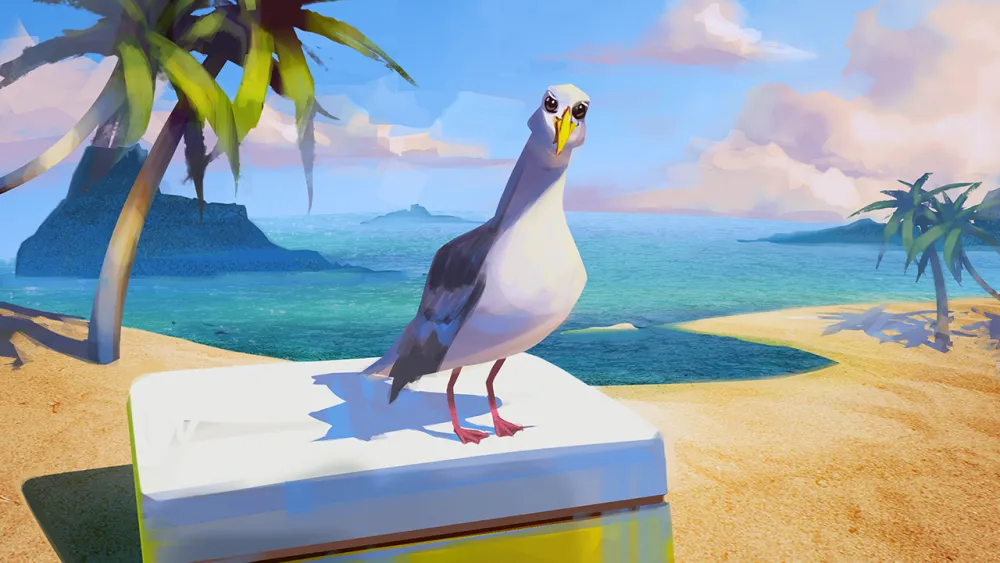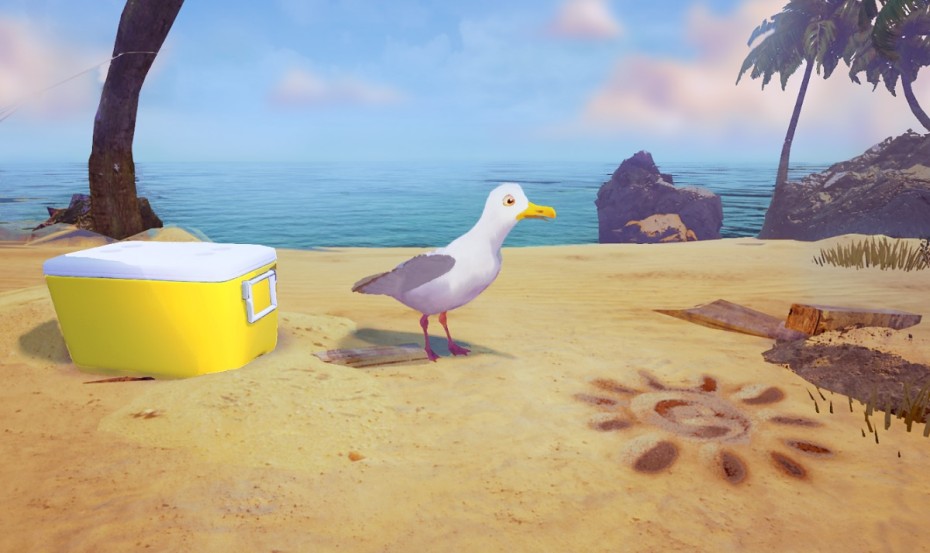Have you ever been tricked by a fictional character? I don’t mean has a character ever tricked you because of how the writer orchestrated a scene or how an actor delivered the character’s lines, I mean has a fictional cartoon character ever looked you in the eyes with the intent to con you and succeeded? It hadn’t happened to me until yesterday, but now that I’ve experienced Gary the Gull, I have a newfound respect for the sly and cunning nature of talking seagulls.
Gary the Gull is an interactive experience from Motional’s Director and CEO, Mark Walsh. If you watch the trailer and think to yourself, “Wow! This is really colorful and well done. It almost looks like a Pixar movie or something,” you’re not too far off. Walsh was an animator at Pixar for over 15 years and worked on films like Finding Nemo, Toy Story 2, and Ratatouille.
Iterate to Create
“Every single movie I ever worked on really sucked at one point,” Walsh told me during an interview at GDC. “The way we liked to work at Pixar was through iteration. The final product you’d see of a film, was nowhere near what the first version looked like. In the case of Gary the Gull, we’re such a young company at Motional that we haven’t gotten to that point yet. This right here is the first iteration so I’m really curious to know if it sucks or not.”
In Gary the Gull, you’re sitting on the beach with your cooler of food, enjoying the sun and the sound of crashing waves. It’s a typical summer day. Then all of sudden a seagull drops down in front of you and starts talking. At first he’s just chatting, but then it quickly becomes clear that his true intentions are much more nefarious.
“I recognize the value of a setting given my background as an actor and animator, but I also recognize that people inherently connect more with characters than they do settings,” Walsh said. “If you look at what Disney has created over the past 100 or so years, it’s a collection of characters.”
A character like Gary would be interesting in a film, but he wouldn’t be as compelling. He actually tried to trick me into turning my head to look at something behind me, which resulted in him sneaking into my cooler to nibble on my meal.
Redefining Film Through Virtual Reality
“Because VR isn’t a viewing-based medium and is instead an interactive medium,” Walsh explained, “When I watch a film in VR, it actually puts me inside the experience.” In that regard, once I turned back, he made excuses and lied to fool me again. He even asked me questions that I could respond to both verbally and nonverbally. It’s a whole new type of interaction that you could never see in a traditional film format.
“Working with something in VR is very different,” Walsh said. “In a film, you’d simply watch Gary con someone, it’s passive. But in VR, you’re the one that’s being conned, so as a director, I have to figure out how to con you.”
Interactive experiences are relatively new to VR – most people associate the medium with gaming. While video games certainly serve a huge amount of potential for virtual reality as a platform, films do as well. Directors can more closely and intimately communicate and interact with an audience in VR on a level that was never possible with traditional film.
“An intersection of games and film is coming,” Walsh said. “And VR is the perfect platform for that.”































